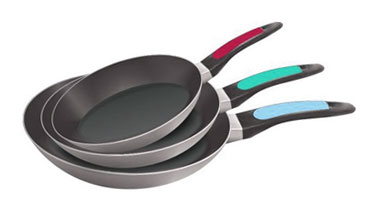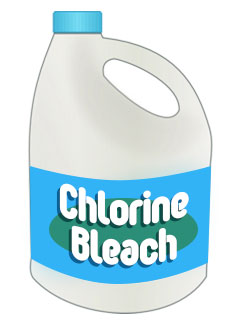Uses of Halogens
Fluorine
Fluorine compounds (Fluorides) are added to toothpaste to prevent tooth decay. In some places fluoride is added to the water supply.
 Hydrogen fluoride and boron trifluoride are used as catalyst in the petrochemical industry to speed up certain reactions.
Hydrogen fluoride and boron trifluoride are used as catalyst in the petrochemical industry to speed up certain reactions.
Fluorocarbons are chemical compounds consisting of fluorine and carbon. Some of these can be chemically changed to compound that can be formed into plastics. The plastics formed are very stable and tough. They do not burn, are unaffected by solvents or other chemicals are not attacked by bacteria or insects. Teflon, used for non-stick frying pans, Kel-F and Viton are examples of fluorocarbon plastics.
Chlorine
Liquid chlorine is added to drinking water at very low concentrations to kill bacteria. Similarly chlorine is added into swimming pools to kill bacteria.
 Chlorine is used as a bleaching agent. Chlorine interacts with oxygen to reduce dyes and pigments to colourless compounds.
Chlorine is used as a bleaching agent. Chlorine interacts with oxygen to reduce dyes and pigments to colourless compounds.
Calcium hypochlorite - Ca(OCl2) and sodium hypochlorite – NaOCl are dissolved in water to form household bleach which is used as a disinfectant and cleaning agent.
Many useful compounds of chlorine exist, the most common being sodium chloride i.e. common salt. When combined with metals and oxygen chlorine forms chlorates which are used across many industries from the manufacture of fireworks to the extraction of gold from its ore.
Chlorine combines with hydrogen to form the industrially important hydrogen chloride. This when dissolved in water forms hydrochloric acid, which is used in the manufacture of metals, food plastics and many other products.
Bromine
Bromine is used in the manufacture of pesticides and fumigants.
Silver bromide is used as a component of photographic films.
Bromides of potassium, sodium and calcium are used in medicine in the manufacture of sedatives.
 Iodine
Iodine
Iodine is extensively used in the pharmaceutical and therapeutic industries. Iodine dissolved in alcohol is used as an antiseptic and put on cuts.
Iodine is a component of several dyes.
Safety precautions for handling halogens
Because the halogens are very reactive and poisonous, care must be taken when using them. Chlorine is used only in a fume cupboard. Iodine should not be handled with bare hands. Gloves and goggles should be worn while handling reactive chemicals.
